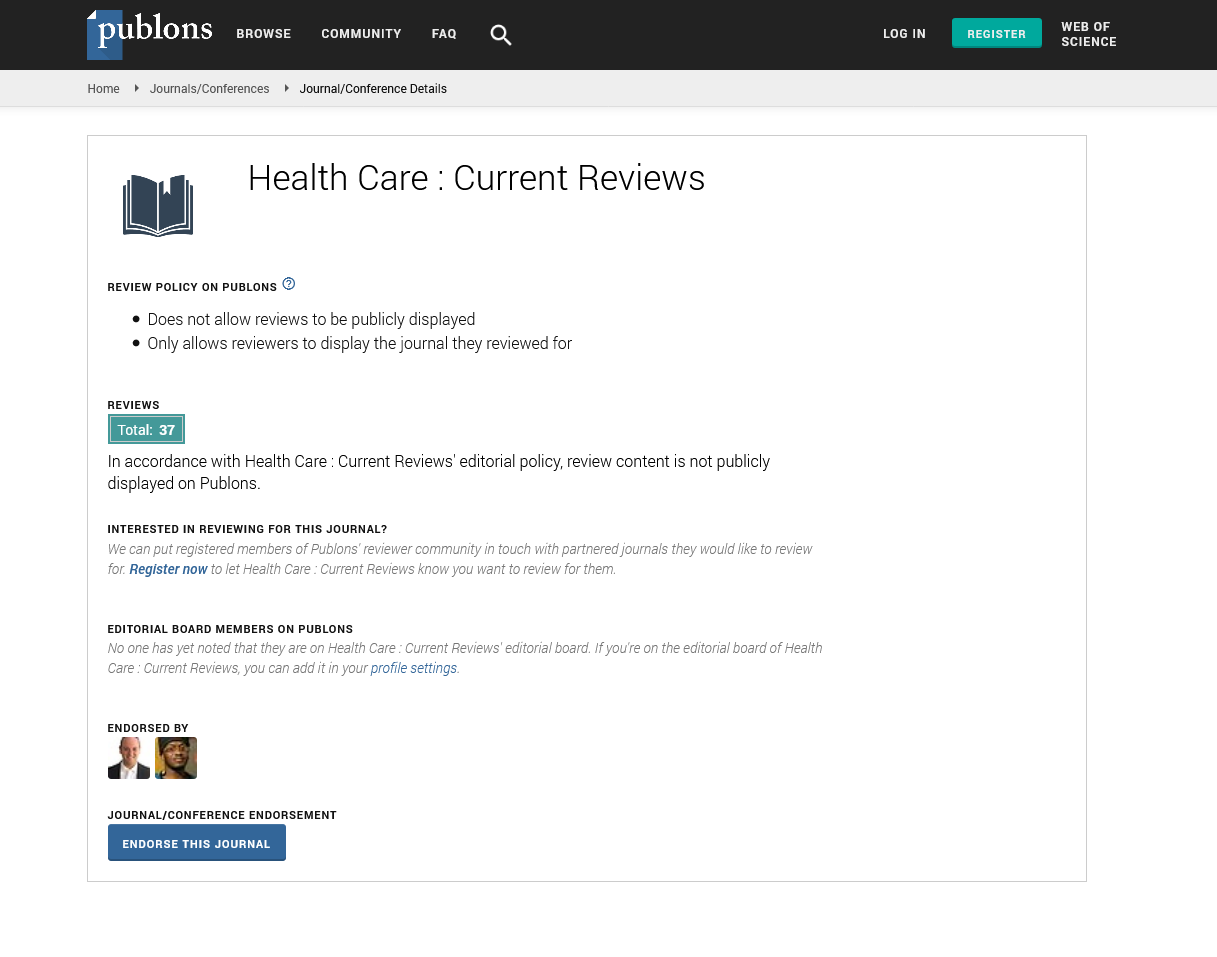Indexed In
- Open J Gate
- Academic Keys
- RefSeek
- Hamdard University
- EBSCO A-Z
- Publons
- Geneva Foundation for Medical Education and Research
- Google Scholar
Useful Links
Share This Page
Journal Flyer

Open Access Journals
- Agri and Aquaculture
- Biochemistry
- Bioinformatics & Systems Biology
- Business & Management
- Chemistry
- Clinical Sciences
- Engineering
- Food & Nutrition
- General Science
- Genetics & Molecular Biology
- Immunology & Microbiology
- Medical Sciences
- Neuroscience & Psychology
- Nursing & Health Care
- Pharmaceutical Sciences
Commentary - (2024) Volume 12, Issue 4
Advances in Patient Care: A Review of Contemporary Practices and Technologies
Jane Smith*Received: 29-Nov-2024, Manuscript No. HCCR-24-28130; Editor assigned: 02-Dec-2024, Pre QC No. HCCR-24-28130 (PQ); Reviewed: 16-Dec-2024, QC No. HCCR-24-28130; Revised: 23-Dec-2024, Manuscript No. HCCR-24-28130 (R); , DOI: 10.35248/2475-319X.24.9.367
Description
In recent years the landscape of healthcare has undergone significant transformations driven by advances in both patient care practices and technology. These changes are enhancing the quality of care improving patient outcomes and streamlining healthcare processes. One of the most profound shifts in patient care has been the rise of telemedicine a service that allows patients to consult with healthcare providers remotely through video calls phone consultations or messaging platforms. The COVID-19 pandemic accelerated the adoption of telemedicine highlighting its potential to bridge the gap between patients and providers particularly in underserved and rural areas. Telemedicine offers convenience and accessibility for patients with chronic conditions those in remote locations or individuals unable to visit healthcare facilities due to mobility or time constraints. It also plays a essential role in reducing the burden on hospitals and clinics enabling healthcare professionals to extend their reach and manage care more efficiently. Remote monitoring tools such as wearable devices and sensors have complemented telemedicine allowing clinicians to track vital signs like heart rate blood pressure and glucose levels in real time further enhancing the management of chronic diseases such as diabetes and cardiovascular conditions. Artificial Intelligence (AI) and Machine Learning (ML) are also revolutionizing patient care by providing clinicians with powerful tools to enhance diagnosis treatment planning and personalized care. AI algorithms can analyze vast amounts of medical data including images lab results and patient histories to assist healthcare professionals in making more accurate diagnoses.
For instance, AI is increasingly used in radiology to detect early signs of diseases such as cancer offering a level of precision and speed that often exceeds human capabilities. In addition to diagnostics AI-powered tools are improving treatment outcomes by helping to tailor individualized care plans based on a patient’s specific needs. By processing data on genetic makeup lifestyle and environmental factors AI can suggest personalized treatments that are more likely to succeed. The integration of AI into healthcare systems not only enhances efficiency but also reduces human error which can be critical in saving lives. Another significant advancement in patient care is the rise of precision medicine which considers individual differences in genetics environment and lifestyle. Genetic testing and genomic sequencing have been pivotal in the rise of precision medicine particularly in oncology. For example some cancer treatments now target specific genetic mutations in tumor cells rather than broadly attacking all cancer cells. This not only improves the chances of treatment success but also minimizes damage to healthy cells reducing side effects and improving quality of life. Advancements in robotics have also significantly impacted surgical procedures offering greater precision control and minimally invasive options.
Robotic-assisted surgery allows surgeons to perform complex procedures with enhanced accuracy often through small incisions which results in faster recovery times less pain and fewer complications for patients. Technologies like the da Vinci Surgical System enables surgeons to operate with a high degree of dexterity translating their hand movements into smaller more precise movements inside the body. Minimally invasive surgery paired with advanced imaging technologies has become a standard in many areas of healthcare including orthopedics urology and cardiology. Patients undergoing these procedures experience shorter hospital stays and quicker return to normal activities making these advancements vibrant to improving patient care.
Citation: Smith J (2024). Advances in Patient Care: A Review of Contemporary Practices and Technologies. Health Care Curr Rev. 12:417.
Copyright: © 2024 Smith J. This is an open access article distributed under the terms of the Creative Commons Attribution License, which permits unrestricted use, distribution, and reproduction in any medium, provided the original author and source are credited.

